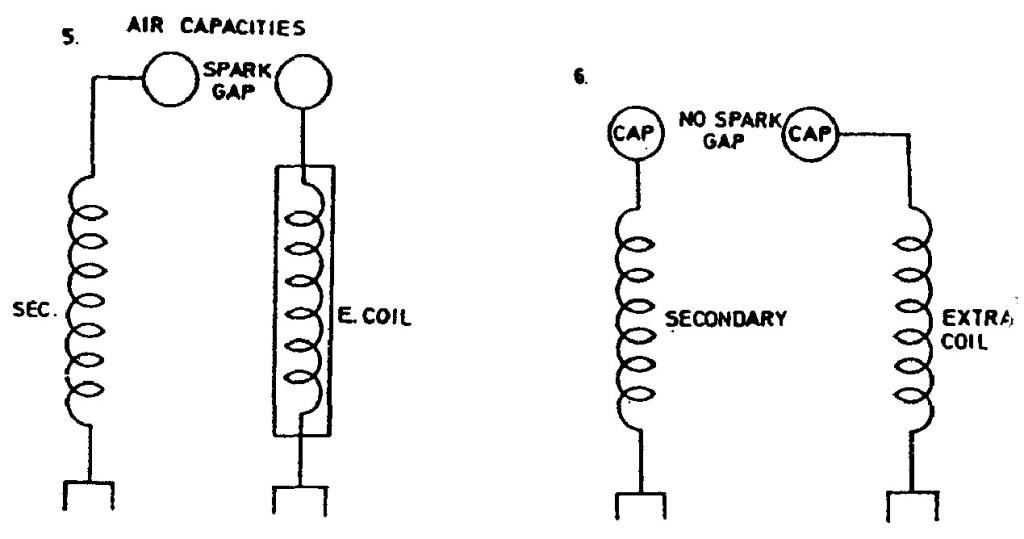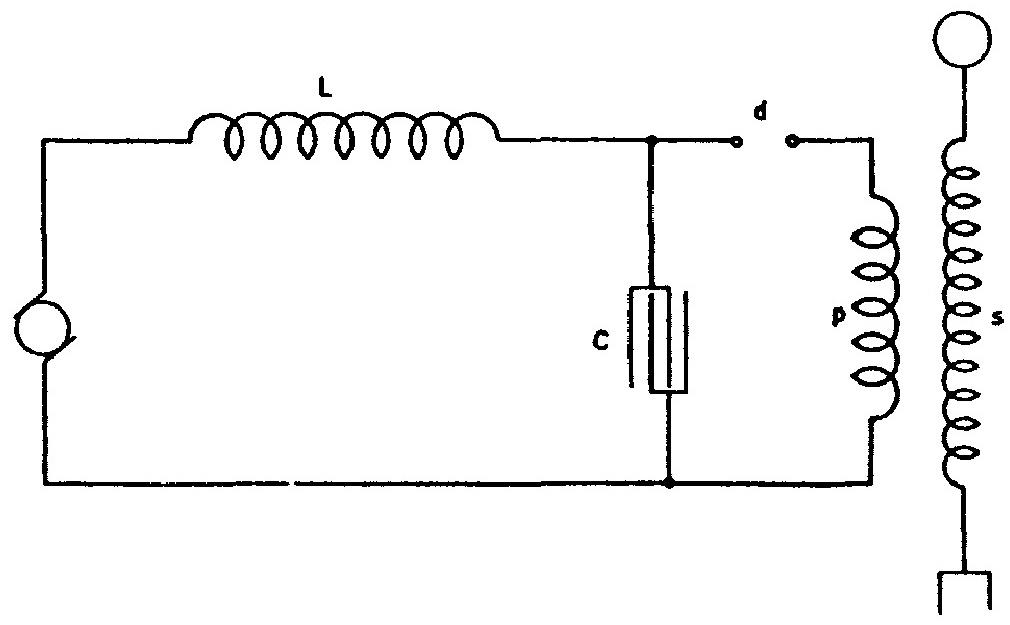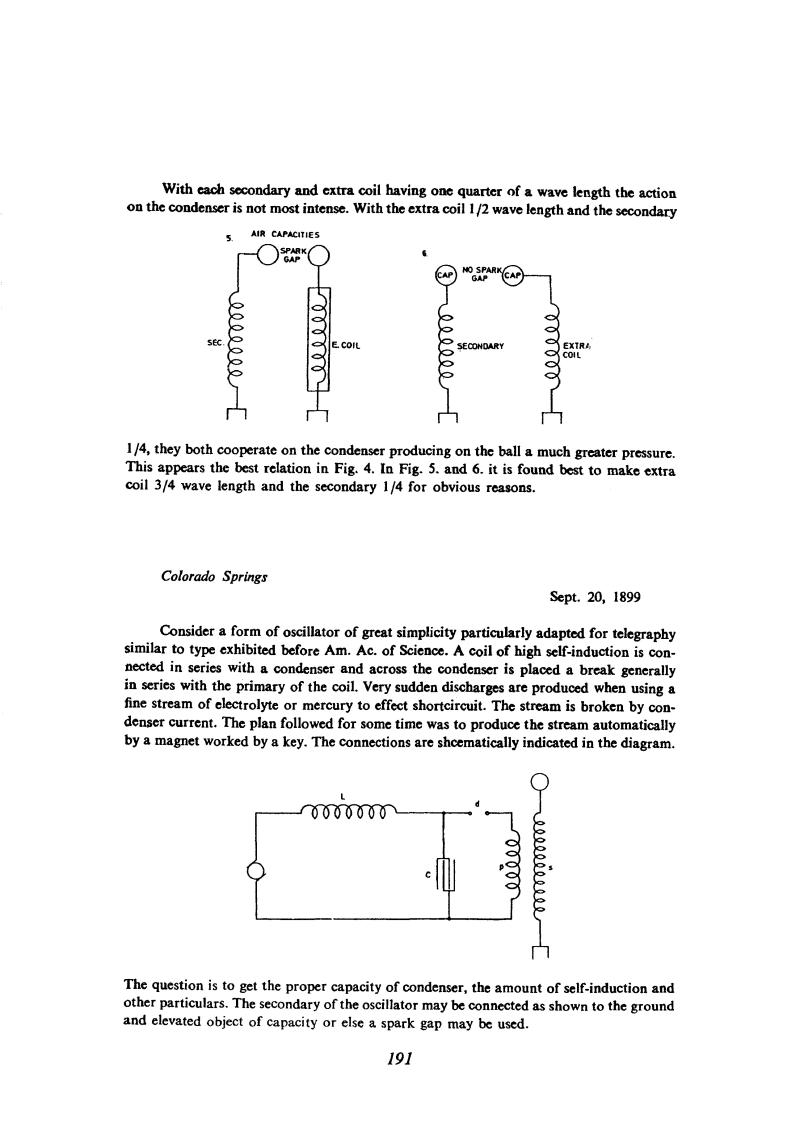
Nikola Tesla Books
With each secondary and extra coil having one quarter of a wave length the action on the condenser is not most intense. With the extra coil 1/2 wave length and the secondary 1/4, they both cooperate on the condenser producing on the ball a much greater pressure.
This appears the best relation in Fig. 4. In Fig. 5. and 6. it is found best to make extra coil 3/4 wave length and the secondary 1/4 for obvious reasons.
Colorado Springs
Sept. 20, 1899
Consider a form of oscillator of great simplicity particularly adapted for telegraphy similar to type exhibited before Am. Ac. of Science. A coil of high self-induction is connected in series with a condenser and across the condenser is placed a break generally in series with the primary of the coil. Very sudden discharges are produced when using a fine stream of electrolyte or mercury to effect short circuit. The stream is broken by condenser current. The plan followed for some time was to produce the stream automatically by a magnet worked by a key. The connections are schematically indicated in the diagram.
The question is to get the proper capacity of condenser, the amount of self-induction and other particulars. The secondary of the oscillator may be connected as shown to the ground and elevated object of capacity or else a spark gap may be used.
191
September 20
He calculated the oscillator with electrolytic breaker and inductive coil in the supply line of the oscillator, assuming that the entire kinetic energy of the coil is converted into electrostatic capacitor energy, and that happens when the voltage in the capacitor reaches the source voltage. In the shown circuit, however, the voltage in the capacitor could reach even higher levels depending on the validity factor of the coil and the breaker speed, but Tesla does not consider such a case here. The breaker which Tesla describes here operates on the principle of a fine fluid stream evaporating under the influence of current through the device (please see pictures), and he studied it in relation to the oscillator design which he switches on by means of a disconnect.



